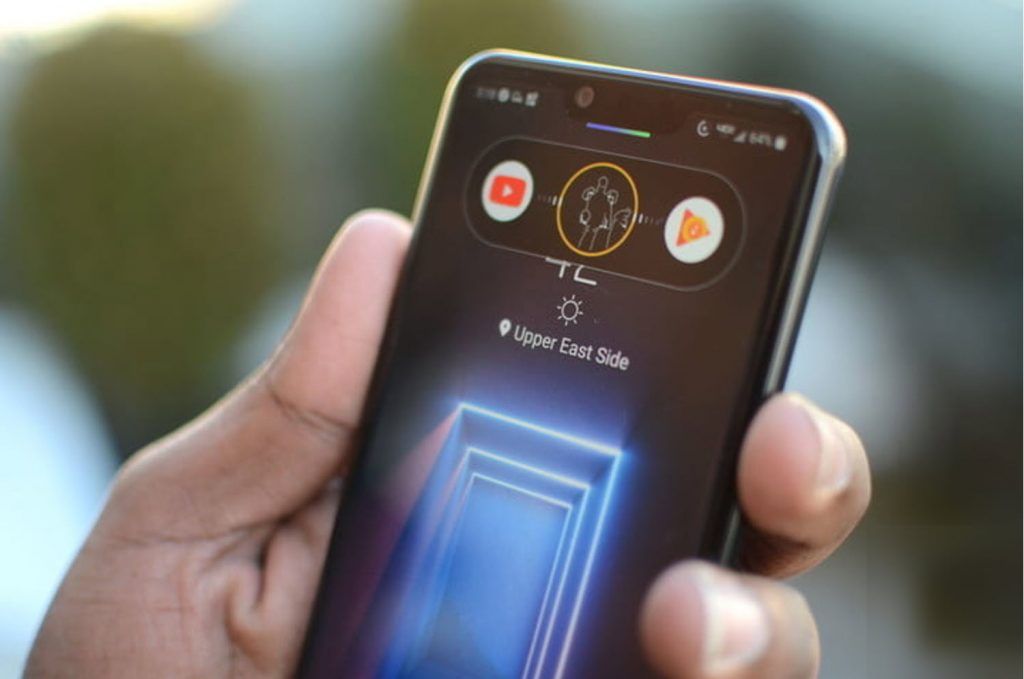This is truly the year of flexible smartphones displays and a new camera senor known as Time of Flight camera (ToF) in flagship smartphones. The latest Samsung Galaxy s10 (5G), Honor View 20, LG G8 ThinQ and the Huawei P30 Pro all have this new additional camera but, what is it and what does it do anyway? In summary, A ToF camera delivers 3D image information and helps to solve tasks where 2D data isn’t enough.
For inspection tasks in low-contrast situations or varying light conditions in particular, 3D technology offers an added dimension for capturing the properties needed for measurement. Factory automation, robotics and logistics are often used in applications where 3D image data can effectively supplement 2D data. What is Time-of-Flight?
A Time of Flight camera uses the known speed of light to measure distance. The “flight time” of a reflected beam of light is measured and the amount of time taken to make a return trip to the sensor is calculated against the speed of light particles to build what’s known as a range image of the scene in front of the lens. What this all means is that with a precise measurement of key focal points, the camera hardware and software can create a sharper photo.
Range Imaging
A time-of-flight (ToF) camera uses a technique known as range imaging to assist in taking a great photograph. There are several different ways to build a range image and a ToF camera uses a beam of high-intensity light that’s projected out and the time it takes the reflected light to return to a special sensor is captured. Software then uses that time and compares it to the speed of light (estimated at 300,000,000 meters/second). When you know how fast that beam of light was flying and how long it took for it to leave the camera — or how long it took to hit a spot in front of the lens then return to a sensor — you can get a precise distance measurement.
The distance information doesn’t have to be marked on a photo or on a lens, though. Camera software can use the distance measurement(s) internally in order to improve focus and picture sharpness, especially when there isn’t a lot of external light.
The one very important thing is that everything has to work very fast. That’s because light itself is so fast. For example, to mark a distance of 3 meters (about 10 feet) everything has to react in under 20 nanoseconds. There are one billion nanoseconds in one second, so that means everything happens in one fifty-millionth of a second.
How phones use Time of Flight Camera
Bokeh effect
Huawei’s latest P30 Pro has over 5 cameras and one of the is the ToF camera. In the Honor View 20 the time-of-flight camera is paired with a 48-megapixel sensor as part of the main, rear-facing camera. It lends depth information that enhances portrait mode, creating a really accurate bokeh effect with the subject in sharp relief and the background blurred. But that’s not all it can do as part of a phone’s main camera.
Augmented reality
The value of time of flight is really about the midrange to long range distances; think about applications like augmented reality, cameras can dramatically boost the accuracy and fuse your actual environment with gameplay and characters for a whole new level of experience.
Secure Biometric

LG has paired the time-of-flight sensor with its 8-megapixel front-facing camera to create what it’s calling the Z Camera — the Z-axis denotes depth for 3D images. This enables facial unlock and something called Hand ID, another secure biometric, which reads the vein patterns in your hand. It’s also used for Air Motion gestures, allowing you to wave your hand over your G8 ThinQ to trigger various actions such as playing and pausing music without touching the device.
3D experience
There’s potential for deeper social interactions as well. Instead of FaceTime with Animojis, you might have a more fully realized 3D experience. Time-of-flight sensors can map your environment accurately, so your friend’s avatar isn’t floating in the air, but actually sitting on your couch next to you.
Mapping
Another area where time-of-flight cameras could help is indoor navigation. If there’s a 3D map of your building in the cloud, then the sensor could potentially recognize precisely where you are at any given moment.
As we have seen, Time-of-flight cameras when coupled with improved processing power and higher speed connectivity, could be about to bring that original vision to life as we know it.

